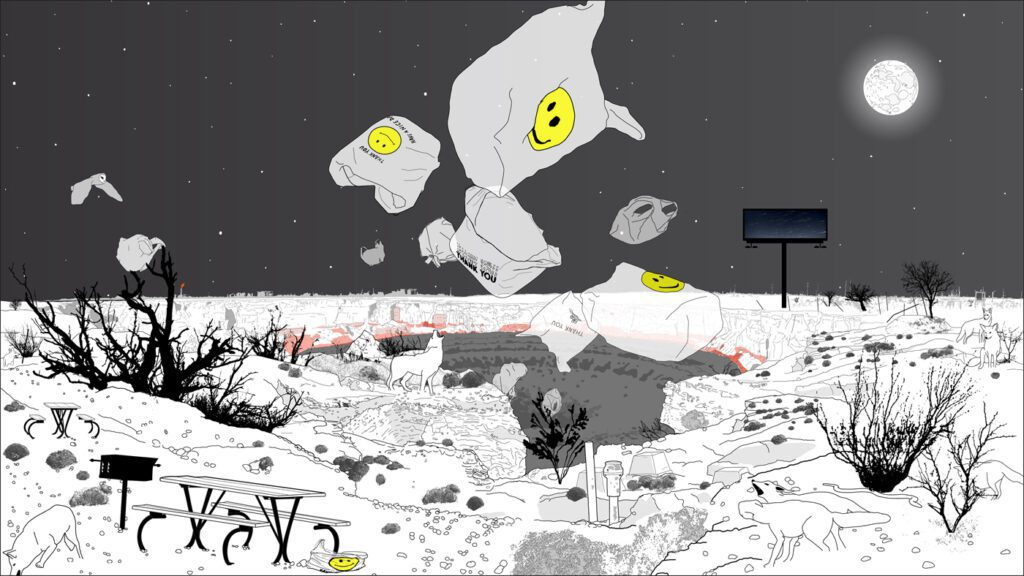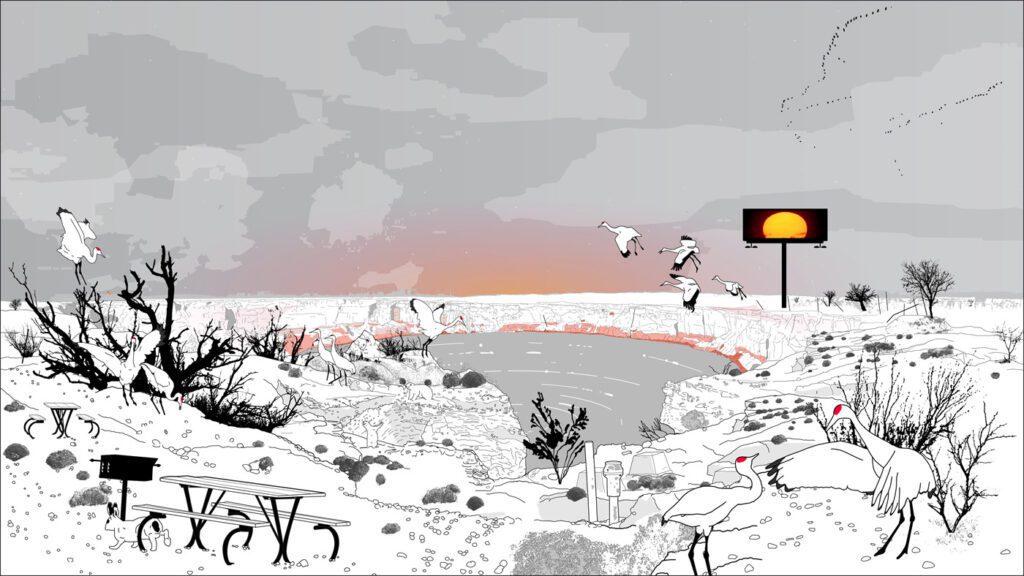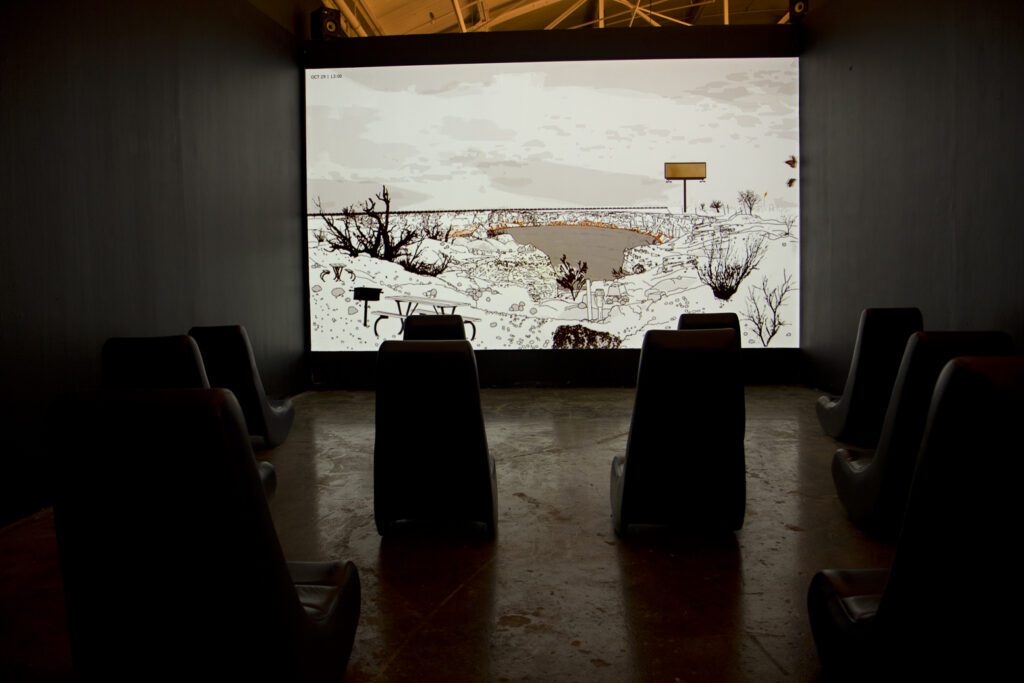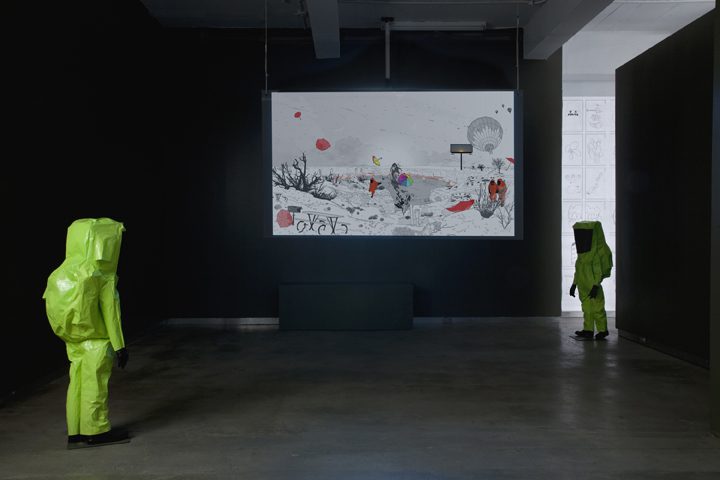Spring, Summer, Fall, and Winter
Four archival pigment prints on Crane Museo
Dimensions 26″ x 44″
Available as individual prints, or as a set.
Mesocosm (Wink, Texas) is part of an ongoing series of animated landscapes that develop and change over time in response to software-driven data inputs. The title is drawn from the field of environmental science and refers to experimental, simulated ecosystems, which allow for manipulation of the physical environment and are used for biological, community, and ecological research (Kansas State University, Division of Biology, Rainfall Manipulations Plots description). The animated elements are drawn by hand, frame-by-frame, yet their choreographies are dynamic—not predetermined or canned—dictated by constraints in real-time. Each of the works in Mesocosm is long in duration and recombines perpetually as inputs determine order, density, and interrelationships. They are looped and have no beginning or end. Because change happens slowly, but can produce radical results over time, the works are intended to be seen in public places where people gather or pass through frequently, or lived with like a painting—in living rooms and meeting spaces.
Wink, Texas is the most recent landscape to be animated as part of this Mesocosm series. The animation features a large sinkhole— the “Wink Sink 2,” located on private oil company property in the small Texas town of Wink. This sinkhole has been widening steadily since it opened in 2002. In this animation, it appears as a natural geological event, complete with picnic rest stop furnishings and a billboard. In the background, oil refineries burn off gases in plumes, as an occasional train or coyote ambles past. By day, the landscape is inhabited by a diversity of bird life, prairie dogs, insects, pronghorn antelope, HazMat workers, and—depending on the season—migrating monarch butterflies, snakes, and sandhill cranes. By night, the sinkhole boils, gushes, flows, and expels objects: plastic bags, oil, and dark clouds that whirl out of the sinkhole’s vortex in a ghostly choreography.





